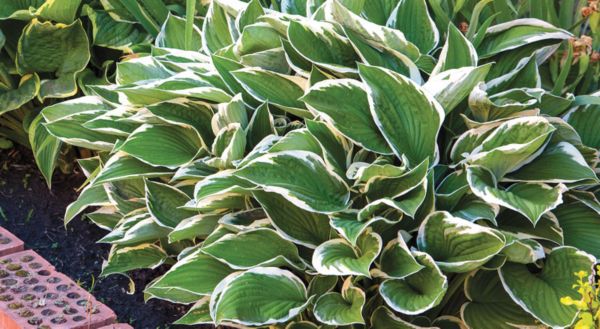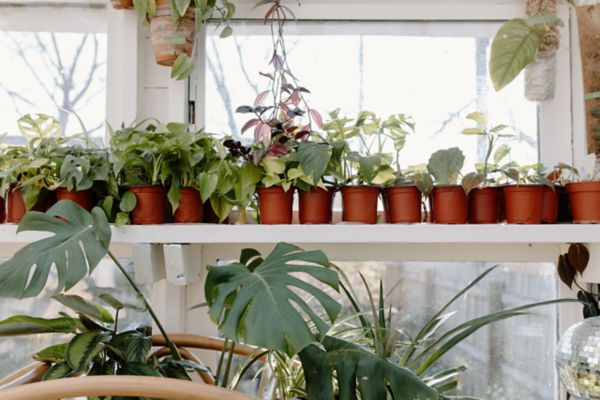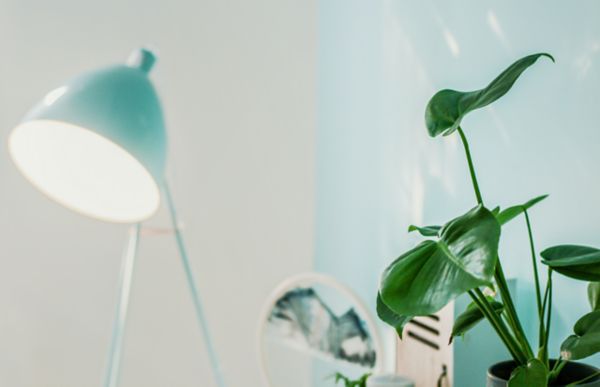How to Grow & Care for Amaryllis
Authored by Leah Chester-Davis
One of the sure signs that the holidays have arrived is the appearance of amaryllis bulbs and kits in stores. Their bright, dramatic colors and ease in growing make them a popular gift. For many, they are an annual tradition to add holiday cheer to winter days. In Greek, the word “amaryllis” means to sparkle, a fitting description for this eye-catching plant.
Amaryllis is a bold, striking flower that lends a touch of drama and elegance to any room. Grown from a bulb, amaryllis is a favorite plant to grow for both beginners and seasoned gardeners. It rewards with dramatic 1- to 2-foot-tall stalks topped with stunning 4- to 10-inch flowers.
The bulbs are available in many sizes, and the larger the bulb, the more flowers each flower stalk will produce. They are available in a wide range of colors, from whites and creams to yellow, pinks, salmon, and reds, along with combinations such as red and white. They also come in single and double blooms. There are also miniature cultivars.
A couple of the dramatic reds are ‘Red Lion’ and ‘Premiere’. Elegant whites to consider are ‘Matterhorn’, ‘Snow White’ or ‘White Nymph’. ‘Picotee’ adds charm with white petals edged in red, and ‘Magic Touch’ flips that with red petals edged in white. ‘Dancing Queen’ boasts red and white stripes. ‘Apricot Parfait’ is a salmon color with touches of cream and pale green. ‘Sweet Star’ is a lovely pale pink. The list goes on, and the possibilities are fun to consider. Most stores show photos on the bulb boxes so you can get an idea of what you are buying.
About amaryllis
| Botanical name: | Hippeastrum |
| Common name: | Amaryllis |
| Plant type: | Bulb, typically grown as an indoor plant |
| Size: | Typically, 1- to 2-foot flower stalks; 4- to 10-inch flowers |
| Sun exposure: | Direct sunlight until plant blooms, then diffused light |
| Soil type: | Quality potting mix |
| Soil pH: | 6.0 to 6.5 |
| Hardiness zones: | Houseplant; can plant outdoors after spring frost and bring inside before fall frost |
| Average first frost: | Varies by region |
| Average last frost: | Varies by region |
| Container friendly: | Yes |
| Beginner friendly: | Yes |
Growing
Amaryllis bulbs are readily available in the garden center in the fall as either individual bulbs or kits with peat moss or a soilless mix and a pot. Larger bulbs store more energy for producing sensational blooms. Select the largest bulbs for the greatest yield in flowers. Inspect the bulbs to make sure there are no signs of mold, decay, or injury. Gently press the bulb to make sure that it is firm. If it is soft, that is a sign of decay.
Select a container that is slightly larger, about 1- to 2-inches wider, than the bulb, and about twice as tall as the bulb to allow for root development and adequate drainage. Make sure it has a drainage hole and a saucer to capture any water drainage. Use sterile, soilless potting mix.
If you purchase a bulb that has already been planted, place it near a window so it has adequate light. If the soil is dry, give it a drink but don’t overwater. When using a kit, follow the directions on the kit. Make sure the kit’s container has drainage holes or use another container.
Amaryllis do not need a dormant period; rather, the forced dormant period in a cool, dark place is a technique used to help control their blooming time. Without that, they typically bloom again if allowed to continue to grow.
Getting amaryllis to reflower
The key to getting amaryllis bulbs to flower repeatedly through the years is to give them a chance to go dormant in the fall so that you can time the bloom time around the holidays. Follow these steps during the fall, around late September or before the first frost:
- Move the plant back indoors to a cool, dark location where temperatures are around 50 degrees, such as a basement or garage.
- After the leaves have turned brown and died back, cut off the browned foliage. Keep in this location for 8 to 10 weeks (about 2 and a half months). Cease watering during this period.
- When the necessary cool period has been met, it’s time to start the growth cycle again. If you see new growth during this period, go ahead and move the potted bulb to a sunny location near a window.
- Simply water and fertilize according to recommendations. Congratulate yourself for getting the growing cycle started again! You may want to repot after three years.
Planting
Add the potting mix to the container and fill about half full. Position the bulb in the pot so that the top one-third of the bulb is showing, and the top of the bulb sits slightly above the edge of the container. Gently fill the pot with soil around the lower part of the bulb and roots. When the soil is added, there should be about an inch of space from the soil and the top of the container or rim.
Water thoroughly until water drains from the bottom. Empty any excess water from the saucer. Place the container in a sunny window and check as needed. Water when the soil feels dry to the touch, about once weekly. Do not overwater.
Plants grow toward the light, and this can be quite noticeable with the tall amaryllis stalks. To keep them from leaning, rotate the pot every day or two. This will also help prevent the need to stake the plant. If the stalks become too top-heavy and staking is needed, be careful not to injure the bulb when inserting a stake into the pot. Use a soft cord or fabric string and gently tie the stalk to the support.
Amaryllis will typically bloom 6 to 8 weeks (about 2 months) after potting. As soon as it blooms, move the plant away from direct sunlight to help prolong the life of the flowers.
Fertilizing
Do not fertilize when planting as that can kill the roots. When growth appears, New Hampshire Extension recommends fertilizing every 2 to 4 weeks with a balanced liquid fertilizer for houseplants. Follow label directions.
After the flowers fade, cease fertilization.
Controlling Pests, Diseases, and Other Problems
Amaryllis does not have a lot of pest problems. When selecting bulbs, inspect them carefully to make sure there are no apparent problems. Select firm, healthy bulbs and avoid those that are damaged or have cankers. Poorly drained soil or soil that is overwatered and stays wet may attract fungus gnats. Follow the watering guidelines.
If you keep your plant and move it outdoors in the summer, the narcissus bulb fly may lay its eggs in the bulbs, causing the foliage to become wilted. If the bulb is soft when pressed, throw it away.
Plant healthy bulbs in clean containers with new potting soil to reduce chances of any fungal diseases such as red blotch.
If you keep your plant and move it outdoors in the summer, the narcissus bulb fly may lay its eggs in the bulbs, causing the foliage to become wilted. If the bulb is soft when pressed, throw it away.
Harvesting
For many, timing is everything when counting on these blooms to brighten holiday décor. To “reap the harvest” when it comes to having a container of beautiful blooms, the bulbs need to be planted by early November to be blooming by late December.
Caring for the plant after flowering
After the flowers fade, a little attention to the care of the plant will help ensure the bulbs can replenish their food reserves to enable them to produce future blooms. Remove the faded blooms to prevent seed formation and move your plant back to a sunny location. After the flower stalk turns yellow, cut it off to about 1 to 2 inches above the bulb. In a sunny place, the plant will continue to grow its long leaves which promote photosynthesis and help replenish the energy stored in the bulb. Think of it as a necessary step to get those big, beautiful blooms again in the fall.
The plant can remain indoors near a sunny window, or it can be moved outdoors after the danger of frost has passed. Allow it time to acclimate to the outdoors by setting the container in a protected area for a few days before moving to a spot in your garden where it will receive full sun for several hours each day. Some gardeners like to dig a hole in the garden to sink the container into the ground where it is less likely to dry out. In the fall, it’s easy to simply remove the container and bring it back indoors.
Water the plant regularly, especially during dry spells. Continue to fertilize monthly with a water soluble, all-purpose, indoor plant fertilizer. Read label directions.
Expert Tips
- Unlike most plants, amaryllis likes to be a bit root bound. Plant in a container just a little larger than the bulb. Make sure the container is deep enough for root growth and heavy enough to support the large 1- to 2-foot stalks without tipping over.
- Stagger planting times of bulbs over a few days or weeks to extend the bloom time through the winter.
Frequently asked questions
Why won’t my amaryllis rebloom?
Amaryllis bulbs typically use their energy to produce a set of blooms, and then need to be given a chance to replenish their energy. Leave the stalk until it turns yellow. Allow the foliage to continue to grow, which helps bulbs replenish their food reserves. In addition, the bulbs need to be exposed to cooler temperatures, 50 to 55 degrees for at least 8 to 10 weeks (about 2 and a half months). During this time, they go dormant when they are placed in a cool, dark location, which is important in getting them to reflower at certain times.
Where is the best place in my home to display my amaryllis?
During the growing phase, amaryllis like bright sunlight. A location near a Southern-facing window with plenty of sunlight is ideal. When the plant blooms, move away from bright, direct light and away from heat sources to keep the flowers vibrant.
Is it normal for the leaves on my amaryllis to be spindly and floppy?
No, leaves should be thick and vibrant, arching upward. If they appear spindly and floppy, it likely is due to insufficient light exposure. Move your plant to a sunny location and make sure it has adequate water without overwatering.





